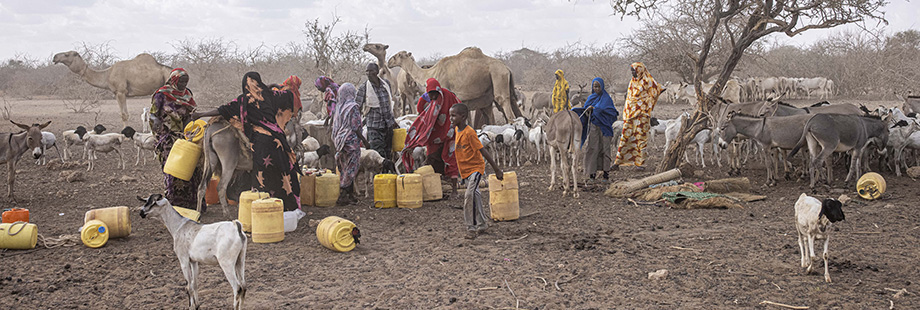Climate Change
Agriculture and agrifood systems are contributing to and are affected by the impacts of climate change, ecosystem degradation and biodiversity loss all of which is exacerbated by the COVID-19 pandemic. They therefore play an important role in the international climate agenda.
Green and climate resilient agriculture is key to making agriculture part of the solution to climate change. It is an integral part of FAO’s effort to achieve its vision within the new FAO Strategy on Climate Change.
FAO is implementing a series of global programmes and is working with governments, cities, regions, and the private sector to develop and implement policy frameworks and enable institutional arrangements for green and climate resilient agriculture.
FAO provides policy and technical assistance, data and tools for evidence-based decision-making, and capacity development to support FAO Member States. This helps to identify climate change adaptation and mitigation options for the agricultural sectors while preserving biodiversity and the environment.
Key policy messages
· Almost half of the solutions to stay within agreed climate goals come from agrifood systems but these need to be transformed through inclusive, multisectoral approaches and innovative solutions that reduce emissions, draw down carbon,boost climate resilience and adaptation.
· A green and climate-resilient agriculture that reverses biodiversity loss, reduces greenhouse gas emissions and enhances adaptation and resilience is essential to address climate change, poverty and hunger. It can provide nutritious food with a low carbon footprint to help achieve healthy ecosystems and healthy diets for present and future generations.
· Transforming agrifood systems so that they produce more food with greater socio-economic benefits, less impact on the environment and natural resources can only succeed through the engagement of farmers, women, youths, small-scale producers and indigenous peoples, together with the adoption of bioeconomy, innovative technology, and the use of indigenous knowledge.
· Leveraging investments in green and climate resilient agricultural practices, including from the private sector, is crucial to lift millions of people out of hunger and poverty.
· FAO is strategically placed to catalyze the urgent transformation needed for agrifood systems to be part of the solution to the climate crisis. FAO is working against time to implement more effective, efficient and innovative agrifood systems based on collaboration and partnerships.
· Up to 811 million people were undernourished in 2020. Climate variability and extreme weather, conflict and economic slowdowns and downturns, further exacerbated by the COVID-19 pandemic, are major drivers of food insecurity, malnutrition, and poverty, and are jeopardizing global commitments to end world hunger and malnutrition in all its forms by 2030.
Featured resources
.jpg)
Issue paper

Issue paper

Case study
Global outlook on climate services in agriculture. Investment opportunities to reach the last mile


Issue paper
Ecosystem restoration for people, nature and climate. Becoming #GenerationRestoration

Issue paper
Understanding the future of Koronivia Joint Work on Agriculture. Boosting Koronivia


Issue paper



